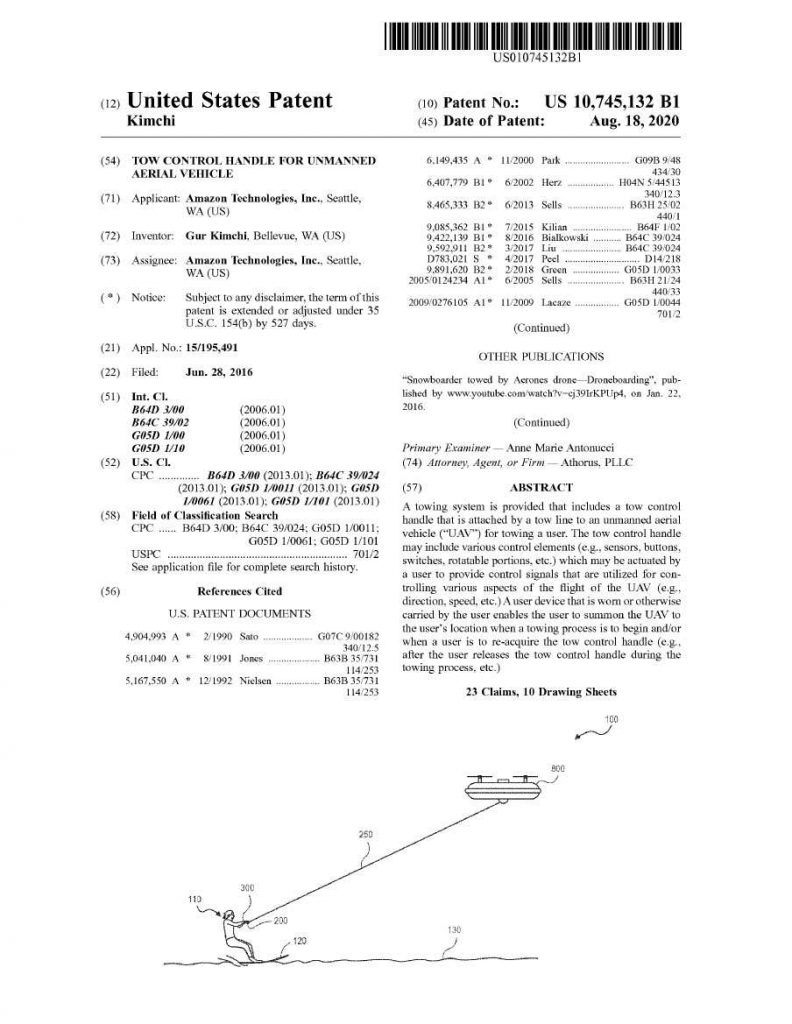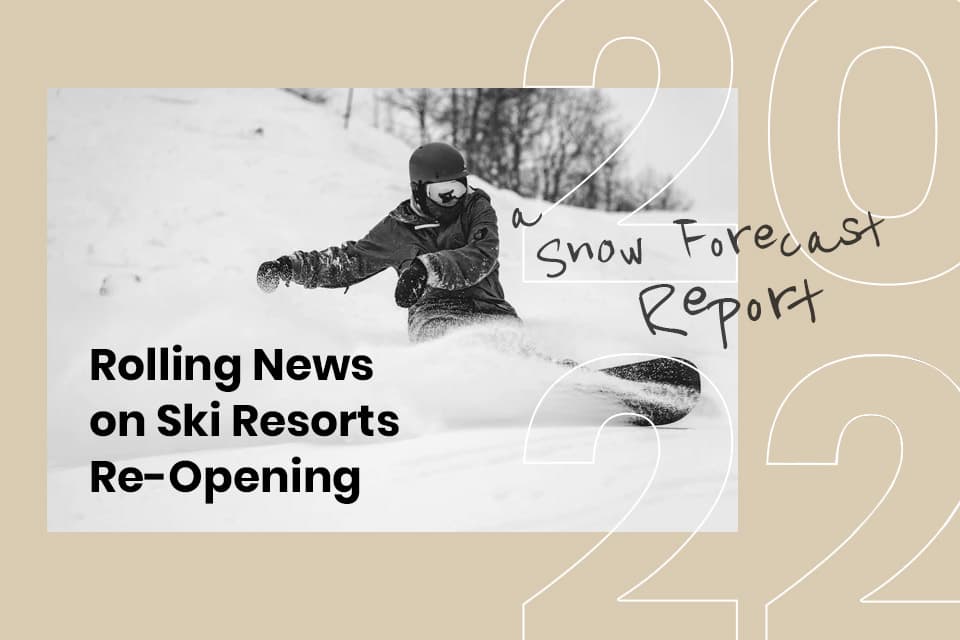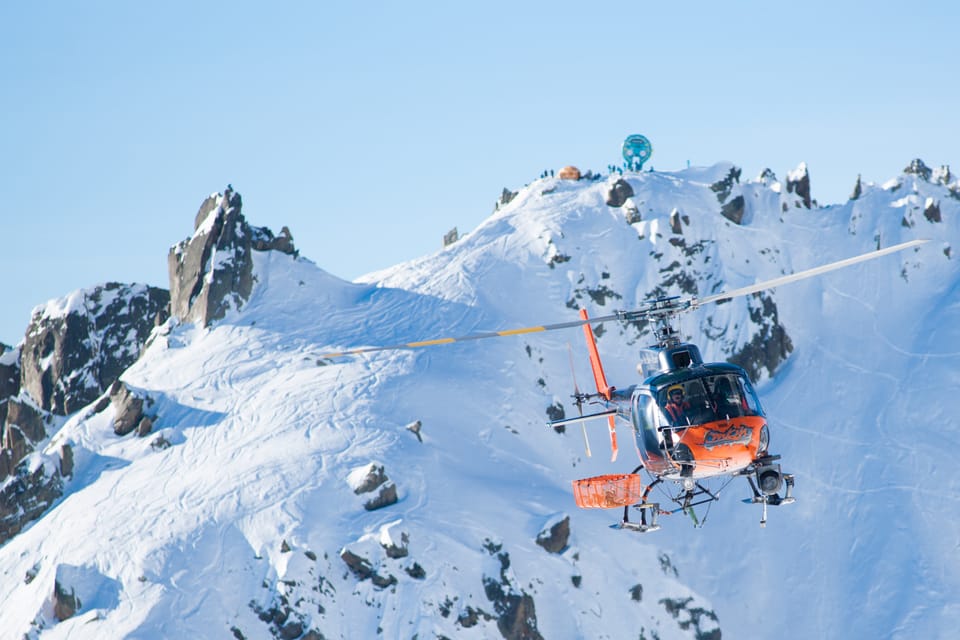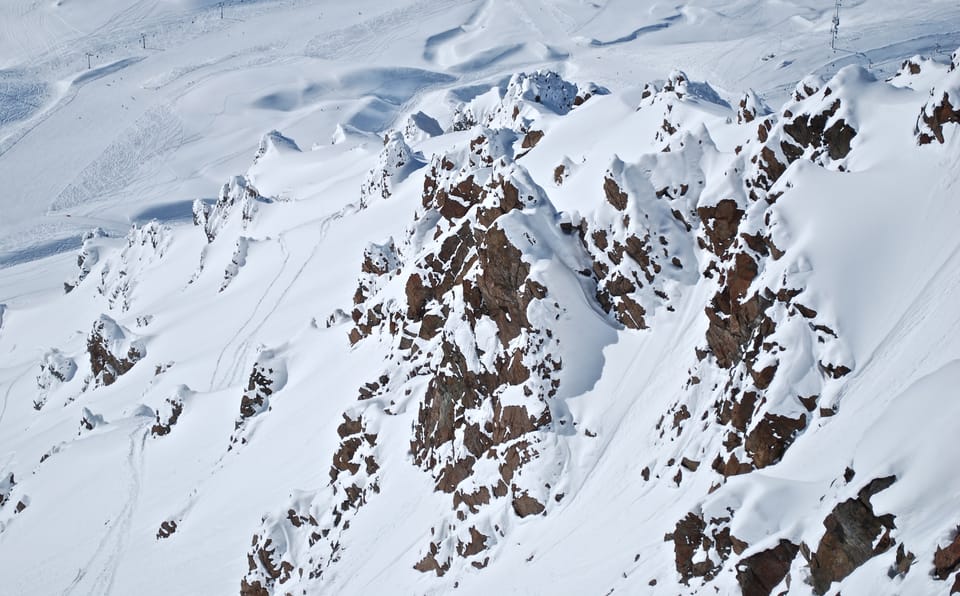Amazon Patent Drone-Pulled Ski Tow Lift

Amazon have patented a drone-powdered-ski-lift designed to tow a skier up a slope or a water skier across water.
The tows cable looks very like a “Poma” or “J bar” surface tow ski lift, it’s just that with the drone pulling it it doesn’t have to be fixed on any one slope and, so long as the drone has power, it can keep ongoing up.
The concept of drones pulling skiers or snowboarders isn’t new. Amazon originally put in for their patent in 2016 and pack then a Santa-on-a-snowboard-pulled-by-a-drone video went viral too.
However Amazon say one big part of their technology is that the drone can be steered by the user – something that has proved tricky to date (look carefully and you’ll see Santa’s drone is steered by a third person). They also say it will be aware of terrain changes to avoid trying to pull a skier up in to a cliff, for example.
It will also be able to lift a user into the air if the terrain gets too treacherous and users will be able to call it to come and get them when they need its assistance.
As with all electric vehicles, drones have also got more powerful and more durable since 2016 too.
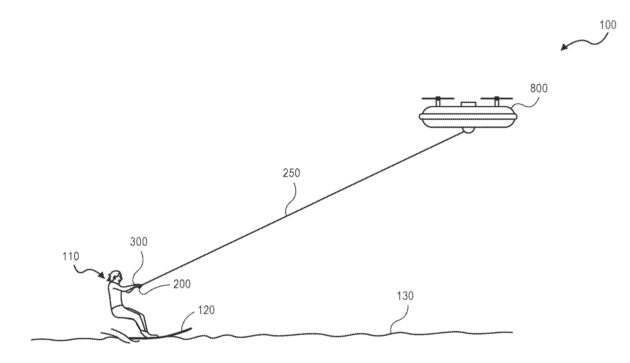
Amazon have been big drone fans for many years now and have a division ‘Prime Air’ which hopes to be able to start making deliveries using drones in the future. Their most recently publicised drone, announced last year, was fully-electric and able to fly up to 24km (15 miles).
Ski areas tend to have a bit of a mixed relationship with drones. Most ban them for regular skier recreational use due to numerous concerns, including collision with lifts. However they are also increasingly used for mountain rescue and for marketing videos.
In 2018 the Polish extreme skier Andrzej Bargiel made extensive use of drones in his successful ascent and ski down K2. The drones were used by his brother at heights not previously reached outside military use to help locate the safest route for Andrzej as well as to guide a lost climber down a safe route on the mountainside and carry medication up to another incapacitated climber.
The patent…
